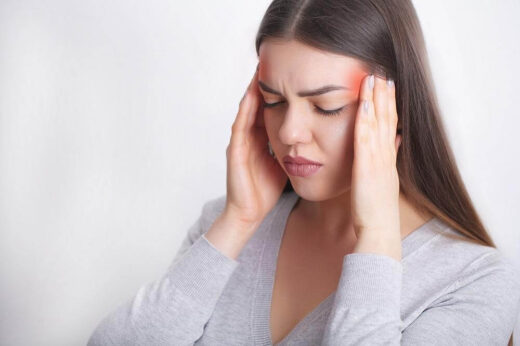The arrival of summer means longer days, beach outings, and brighter skies but for millions of people living with migraine, it also signals a rise in painful, debilitating headaches. If you’ve ever found yourself retreating to a dark room on a beautiful summer afternoon, you’re not alone. High temperatures, dehydration, and light exposure can all trigger or worsen migraine attacks.
In this comprehensive guide, we explore why summer heat triggers migraines, how to prevent heat-related headaches, and what cooling techniques can bring quick relief. Whether you suffer from chronic migraine or are sensitive to heat-induced headaches, this article offers science-backed strategies to help you take back control of your summer.

Does Summer Heat Trigger Migraines?
Yes, hot weather is a well-documented migraine trigger. Many migraine sufferers report increased frequency and severity of headaches during summer. Several environmental and physiological factors contribute to this seasonal flare-up:
- Heat exposure raises core body temperature, stressing the nervous system
- Sunlight and glare overstimulate light-sensitive individuals
- Sudden barometric pressure changes (often due to summer storms) can affect brain chemistry
- Dehydration thickens blood and reduces oxygen flow to the brain
- Humidity impairs the body’s ability to regulate internal temperature
In some individuals, even mild heat combined with sun exposure is enough to set off a migraine episode. This makes prevention strategies during summer especially crucial.
How Can You Prevent Migraines in Hot Weather?
Preventing heat-induced migraines requires a proactive approach. These strategies can significantly reduce your risk of headaches on hot days:
1. Stay Hydrated
Dehydration is one of the most common migraine triggers especially in summer. Drink at least 2.5–3 liters of water per day, more if you’re sweating or active outdoors.
- Add electrolytes (e.g., magnesium, potassium) to replenish minerals lost through sweat
- Avoid caffeine, sugary drinks, and alcohol, which contribute to fluid loss
- Eat water-rich fruits and vegetables like cucumbers, watermelon, and oranges
2. Avoid Sudden Temperature Changes
Going from an air-conditioned room to extreme outdoor heat (and vice versa) can shock the body and provoke a migraine.
- Step outside gradually if you’ve been indoors
- Keep a scarf or thin hat handy to cover your head in intense sun
- Wear UV-protective sunglasses to reduce light strain
3. Monitor the Weather
If you’re sensitive to barometric pressure shifts, track the forecast with a migraine app. On days with dramatic weather changes:
- Stay indoors during peak heat (11:00 AM – 4:00 PM)
- Use blackout curtains or tinted windows to reduce light exposure
- Avoid strenuous activity
How to Ease a Summer Migraine
When prevention fails, relief becomes the next priority. Cooling the body and calming the nervous system can often shorten the duration or severity of an attack.
Immediate relief tips include:
- Apply a cold compress to the forehead, temples, or back of the neck
- Sip ice water slowly to hydrate and cool the core
- Rest in a dark, quiet room
- Practice deep breathing or progressive muscle relaxation
- Use essential oils like peppermint or lavender on the temples
- Take migraine medication (if prescribed) at the first sign of symptoms
Pro tip: Cold packs with menthol or gel beads offer longer-lasting cooling without dripping water.
Does Dehydration Worsen Migraines?
Absolutely. Even mild dehydration can cause the brain to temporarily contract or pull away from the skull, causing pain.
Signs of dehydration include:
- Dry mouth
- Dizziness or lightheadedness
- Dark yellow urine
- Fatigue or irritability
- Thirst (a late warning sign)
Migraines linked to dehydration often come with a throbbing sensation, especially if paired with heat exhaustion. Keeping your fluid intake steady throughout the day, not just when you feel thirsty, is key to prevention.
Best Cooling Methods for Migraine Relief
The goal is to lower your body temperature and reduce stimulation. These cooling strategies can help soothe a migraine episode in summer:
1. Cool Foot Bath
Soaking your feet in cold water helps divert blood from the head, reducing intracranial pressure.
2. Icy Neck Wrap
A cool, damp towel or frozen gel wrap around the neck or shoulders can numb pain and ease nerve tension.
3. Cooling Migraine Caps
Reusable head wraps or hoods designed for migraines provide even cold distribution around the scalp and eyes.
4. Hydrating Mists
Facial sprays with aloe vera or thermal spring water refresh the skin and help regulate body temperature without triggering sensory overload.
5. Peppermint Compress
Diluted peppermint oil offers both cooling and muscle-relaxing effects. Apply it to the temples or back of the neck.
Migraine-Safe Summer Habits
To stay ahead of summer migraine triggers, adopt these long-term habits:
- Stick to a regular sleep schedule, even on vacation
- Eat meals at consistent times skipping meals can trigger migraines
- Limit screen time and reduce glare with filters or glasses
- Use a daily migraine tracker to identify patterns
- Incorporate gentle exercise like swimming or evening walks
- Take magnesium supplements if recommended by your doctor low magnesium levels are linked to migraines
Expert Neurological Care for Migraine and Headache Disorders

If migraines are interfering with your summer and your life, professional medical guidance can make all the difference.
At Erdem Hospital in Istanbul, we provide:
- Comprehensive neurological evaluations for chronic headaches
- Customized migraine management plans, including medication and lifestyle therapies
- Infusion therapies and nerve blocks for severe cases
- Nutritional support to address electrolyte imbalances and triggers
- Stress-reduction coaching and climate-sensitive treatment strategies
With over 37 years of experience, Erdem Hospital combines modern diagnostics with compassionate care to help you understand your migraines, reduce their frequency, and enjoy more pain-free days even under the summer sun.